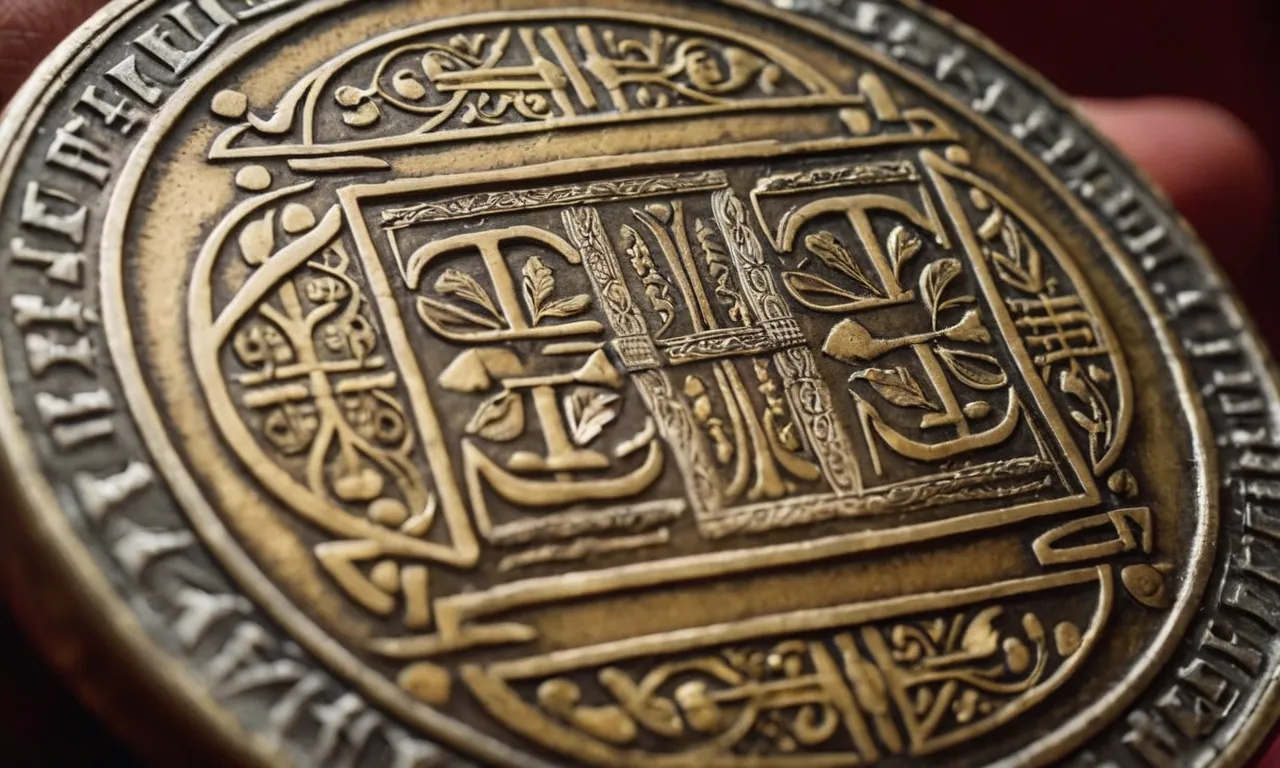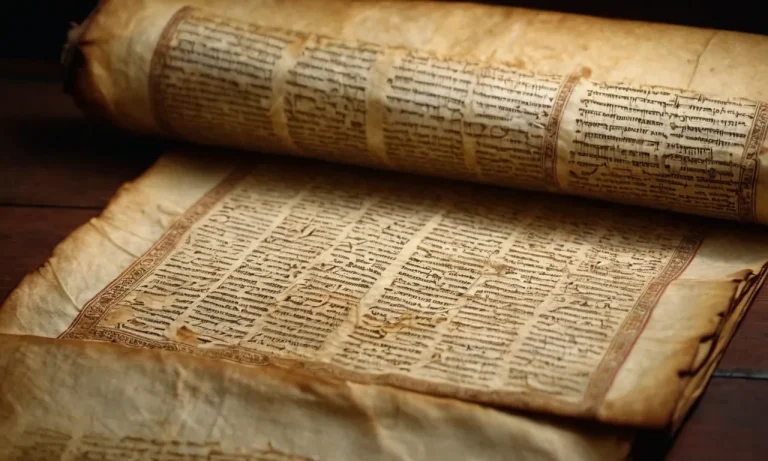How Much Was A Shekel Worth In Biblical Times?
The shekel was an ancient unit of weight and currency used throughout the Middle East, including in ancient Israel.
If you’re looking for a quick answer, the value of a biblical shekel is difficult to pin down exactly, but estimates range from around 10-16 grams of silver.
The shekel was an important unit of account in biblical times, used for weighing silver and setting prices. This article will provide a deep dive into the history and value of the shekel in the Bible.
We’ll cover topics like the origins of the shekel, its use as currency vs a weight, estimations of its silver content and value over different periods, how it compares to other contemporary currencies, and its significance and symbolism in biblical texts.
The Origins and Etymology of the Shekel
The shekel as an ancient unit of weight
The shekel was an ancient unit of weight used throughout the Middle East. The earliest evidence of the shekel dates back over 5,000 years to ancient Mesopotamia and ancient Egypt, where it was used as a unit of currency and exchange.
In Mesopotamia, archaeological evidence shows the shekel weight system was in use by the Akkadian Empire around 2300 BCE.
The shekels at this time were based on a unit of barley corn – a natural and consistent unit of weight.
Over the next 2000 years, the shekel weight became standardized across ancient kingdoms and empires in the region.
Earliest textual evidence in Mesopotamia and Egypt
Some of the earliest written references to shekels are found in ancient Mesopotamian and Egyptian texts:
- Cuneiform tablets from around 2100 BCE refer to payments made in shekels of silver.
- Hammurabi’s Code from 1754 BCE laid out laws and fines based on shekels of silver.
- An Egyptian papyrus from around 1460 BCE records goods being weighed out in “gold by the shekel”.
From these early origins, the shekel weight and currency spread across the Middle East. It’s mentioned frequently in the Jewish scriptures and by 800 BCE was likely adopted as a standard unit by the Israelites.
Possible derivations of the word “shekel”
There are several theories about the etymology of the word “shekel”:
- It may come from the Akkadian word shiqilu, meaning “weighed out”, referring to the common usage of shekels as a unit of weight.
- In Hebrew, the word is sheqel, which may derive from shaqal meaning “to weigh”. Again, a reference to its function as a precise weight.
- It could also possibly be related to the Hebrew shekel meaning “ingot” or standardized piece of precious metal used as currency.
So while the origins of the word are still debated by scholars, most theories relate back to the shekel’s role as an ancient unit of measured weight and currency.
The Shekel as a Unit of Weight
Early shekel weights and the development of standards
In the ancient Middle East, weights and measures were not standardized, so a “shekel” could refer to weights ranging anywhere from 7 to 16 grams depending on the time period and location.
However, evidence shows there were efforts early on to calibrate weight measurements.
Ancient weights made of hematite and other materials marked with the word “shekel” have been discovered by archaeologists dating back over 5,000 years.
Shekel weights in the ancient Near East
Over centuries, some common shekel weight standards emerged in the Mesopotamian region. For example, the Babylonians and Assyrians used a system with a light shekel around 8 grams and a heavy shekel around 10 grams.
The Israelites likely adopted a shekel standard similar to these when they emerged as a distinct culture. Most scholars believe the shekel used in ancient Israel weighed 11-13 grams on average.
Biblical references to the shekel as a weight
There are several biblical passages that mention weights in shekels, indicating it was an established unit of measure in ancient Israel.
For example, Exodus 21:32 establishes financial compensation for injuries based on the weight of a shekel.
Ezekiel 45:12 sets out a system of weights and measures using the shekel. Though the exact weight is not specified, these passages confirm the shekel was a known unit of weight in biblical times used for trade and commerce.

The Shekel as Currency in Ancient Israel
When did the shekel become currency?
The shekel first emerged as a unit of currency in ancient Mesopotamia around 3000 BCE. However, its adoption as an official currency in ancient Israel likely occurred sometime between 1500-1200 BCE, during the late Bronze Age.
According to Biblical texts and archaeological evidence, the shekel became a standardized unit of currency and payment in the regional economy of ancient Canaan and Israel.
Shekels and other coins in the biblical period
During the biblical period, traded goods often served as currency, though minted coins were also coming into use.
Payment was measured against a set amount of silver by weight – the shekel. One shekel was equivalent to a specific weight of silver or gold.
Other coins mentioned include the gerah (1/20th of a shekel) and talents (a large number of shekels).
By the Persian period (539-333 BCE), coinage was common in Judea. The most abundant coins found by archaeologists are Yehud coins, which likely originated from the Persian empire for trade in Judea. These small silver coins sometimes bore ancient Hebrew inscriptions.
Regulating the shekel as standardized currency
The use of the shekel as a standardized unit of currency in ancient Israel was important for regulating trade and payments.
As mentioned in ancient texts, efforts were made to ensure the shekel retained its consistency in purity and weight of precious metals against other currencies.
For example, Leviticus 27:25 in the Torah states that the standard shekel weight was “twenty gerahs” (1/20th unit of a shekel).
This standardization by religious authorities and kings demonstrates an early form of currency administration in the region.
Fixing the shekel to a precise measurement facilitated fair trade and prevented exploitation in transactions.
Estimating the Silver Content and Value of a Shekel
Challenges in determining exact silver weight
Determining the exact silver weight of a shekel coin during biblical times is challenging for several reasons. Ancient scales and measures varied somewhat, and the purity and weight of silver coins fluctuated over time and region.
However, historians have made reasonable estimates based on archaeological finds, analysis of silver artifacts, and details provided in ancient texts.
One key issue is that “shekel” was a unit of weight, not a specific coin. Various shekel coins were minted, and their silver content changed.
During the First Temple period, shekels may have weighed around 11-12 grams of nearly pure silver. Coins from the Persian era weighed 13-14 grams but were only about 50% silver due to alloying copper and lead.
Value relative to wages and goods in biblical texts
Though the silver weight is uncertain, biblical texts give us an idea of a shekel’s purchasing power. A shekel was about a month’s wage for a common laborer.
The Book of Exodus suggests a shekel was worth about 20 gerahs. It could buy one or two sheep, or purchase about 7 kilograms of flour.
The Shekel in Relation to Other Currencies
Contemporary currencies like the Greek drachma
The shekel was widely used for commercial transactions in the lands of the Bible. There are also some references comparing the shekel to Greek currencies.
For example, one report from around 400 B.C. stated that a half-shekel was equivalent to the pay for five days’ work for a Greek soldier (this suggests relative parity between the shekel and common Greek coins like the drachma in that time period).
Shekel equivalents in Persian, Ptolemaic, and Roman coins
Under the Persian empire, coins equivalent to the shekel included the full gold daric or silver siglos. Researchers estimate one daric or siglos was probably worth between 8-12 shekels.
After Alexander the Great conquered the region, Ancient Greek coins circulated, with the tetradrachm approximating the value of one shekel.
Similarly, when Judea came under Roman control, some scholars propose the denarius equaled four shekels in value.
So while the absolute value of a shekel may be hard to pin down, we know from antiquity documents that it traded evenly with other common units like the Greek drachma and Persian siglos at various times.
The shekel also served as a benchmark for setting the value of subsequent Greek, Ptolemaic and Roman coins circulating in the region.
Conclusion
The shekel has a long and fascinating history stretching over thousands of years. While its exact silver weight and value varied across time periods, it maintained its importance as a monetary unit and object of significance in biblical texts.
Examining the shekel provides insight into the economics and cultural contexts of ancient civilizations. The longevity of the shekel as a concept illustrates its deep roots and ongoing relevance in society and scripture in the ancient Middle East.








